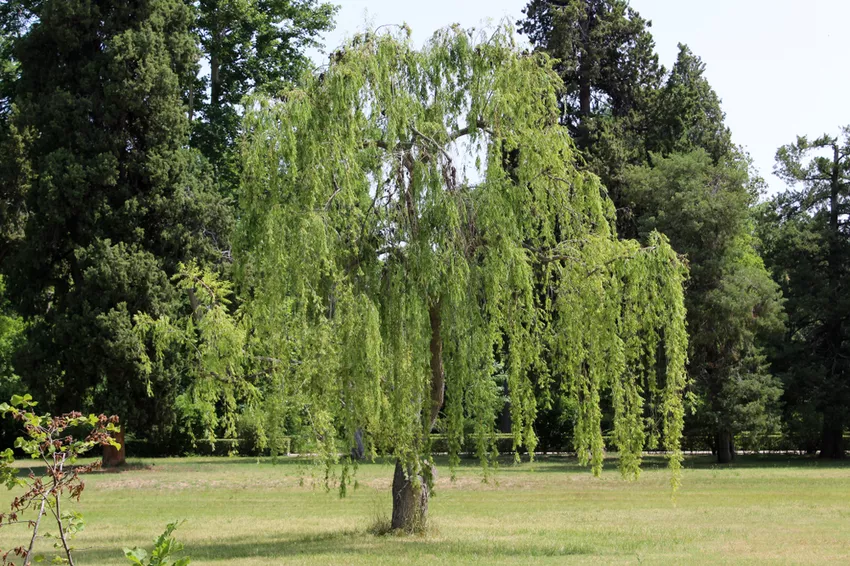The weeping willow makes a good impression thanks to its magnificent growth. The imposing deciduous tree is even suitable for planting on private property. However, there must be enough space for this. Read on this page whether your garden meets the necessary requirements and how to proceed when planting the weeping willow.
 A weeping willow takes up a lot of space
A weeping willow takes up a lot of space
site selection
When choosing the right location, you should consider the following parameters:
- the substrate
- the range
The substrate
Weeping willows need moist, sometimes even wet, soil. In contrast to other deciduous trees, they even tolerate waterlogging excellently. In addition, the soil should be as nutrient-rich and loose as possible so that the roots do not encounter resistance when spreading.
The range
The weeping willow forms a far-reaching crown and is very tall. If you are unable to ensure that there is around 20 meters of space between nearby buildings or other trees for the weeping willow, you should limit yourself to keeping the bucket. Planting on sidewalks or terraces is also not recommended, as underground growth is also very pronounced. The roots often lift up cobblestones.
tips
The weeping willow sheds a lot of leaves in autumn. On the one hand you should take this into account with regard to the location (not close to the neighboring property), on the other hand you can use the foliage as a natural fertilizer to enrich the soil.
manual
- Choose a suitable location.
- Loosen the soil in the desired location.
- Water the weeping willow.
- Dig a planting hole three times the diameter of the root ball.
- Put a layer of compost in the soil.
- Put the weeping willow in the hole.
- Fill in the remaining gaps with soil and press them down lightly.
- If necessary, support the weeping willow with a stake.
- Water the weeping willow well.
- Put some mulch (239.00€) on the soil.
maintenance
- Keep the substrate constantly moist.
- Weeping willows do not need to be fertilized. However, compost or mulch is always recommended.
- Prune your weeping willow regularly.
- Periodically check the tree for pest infestation.